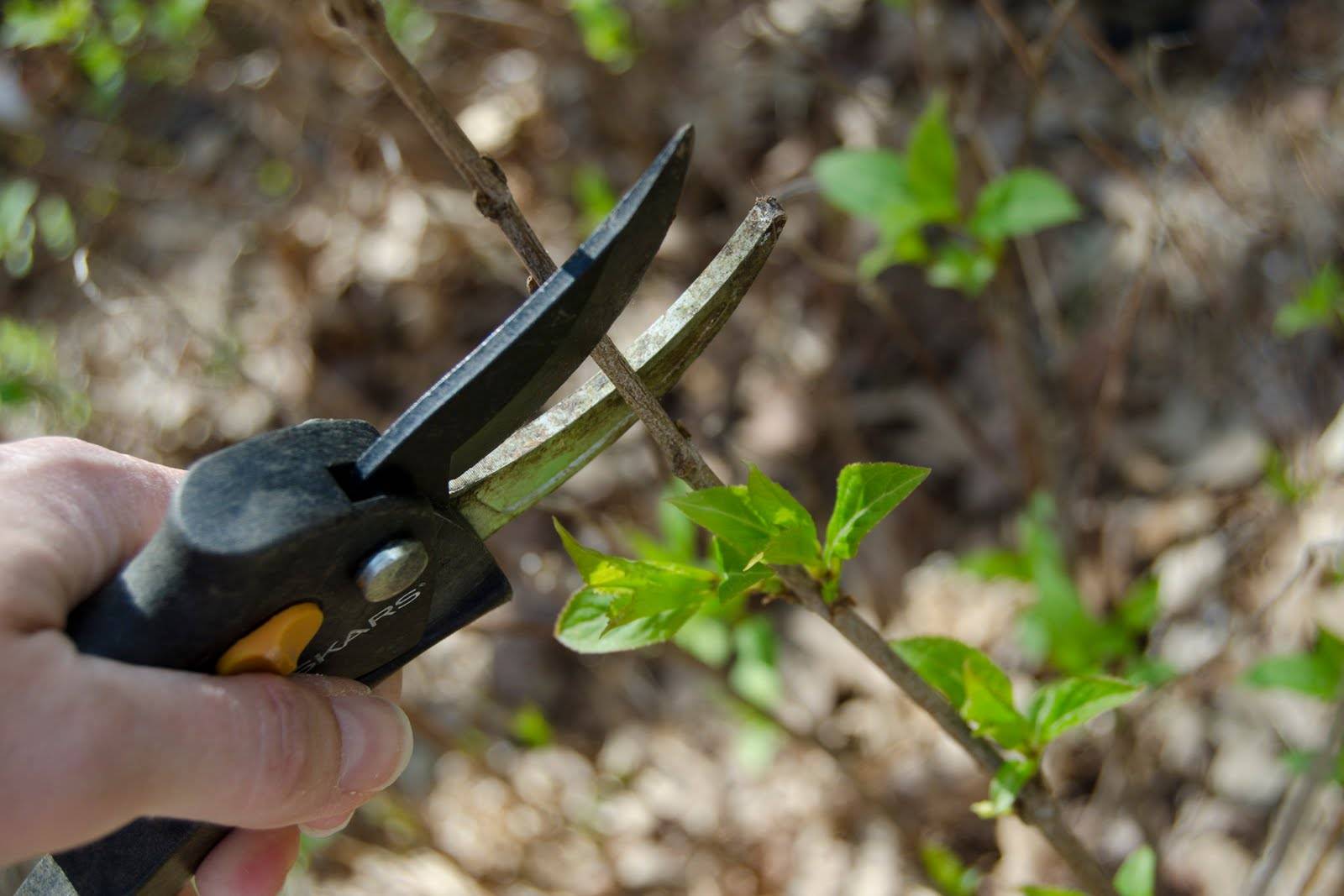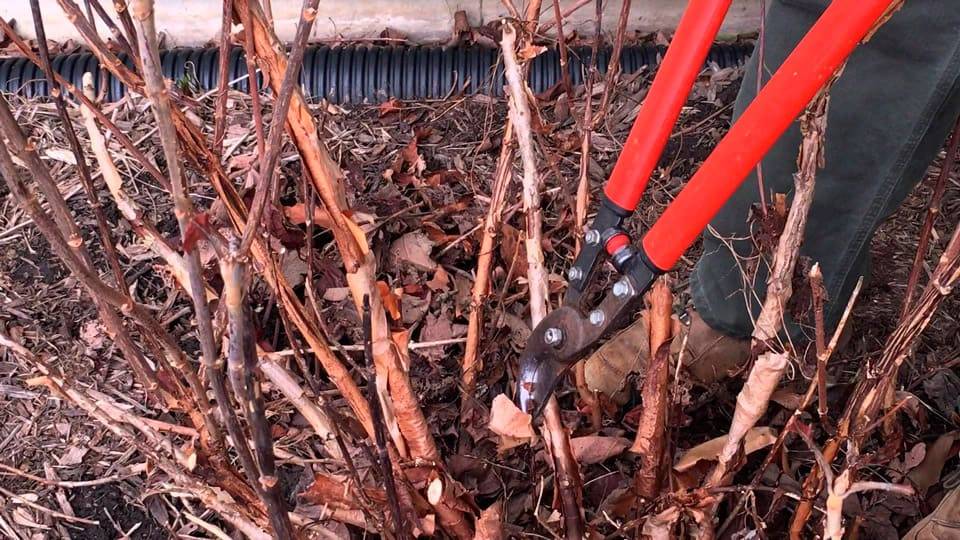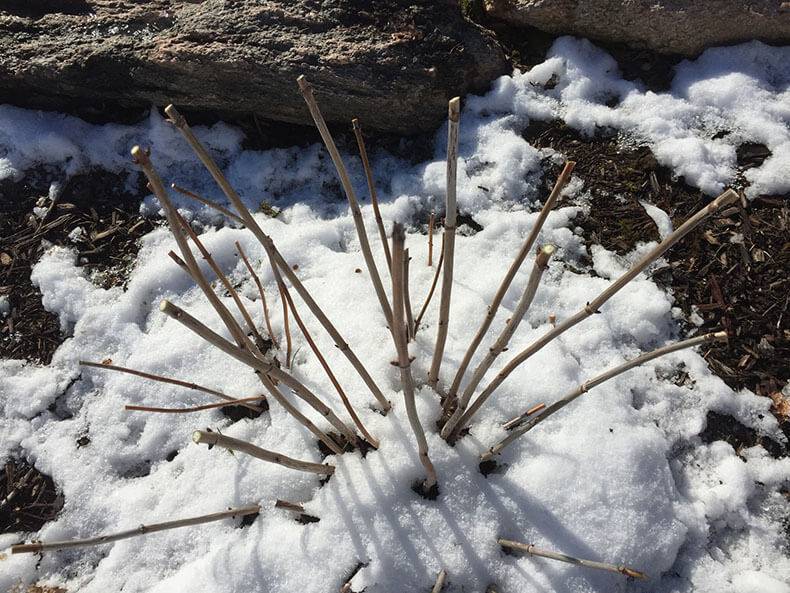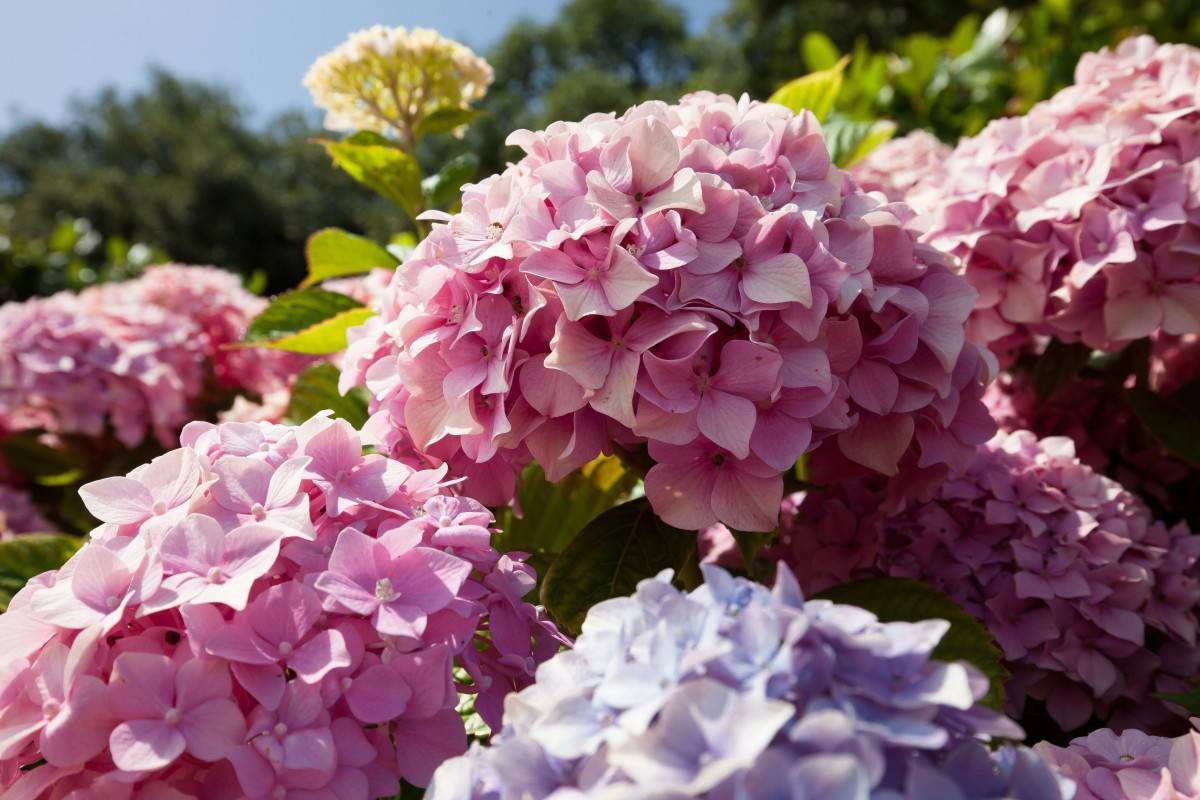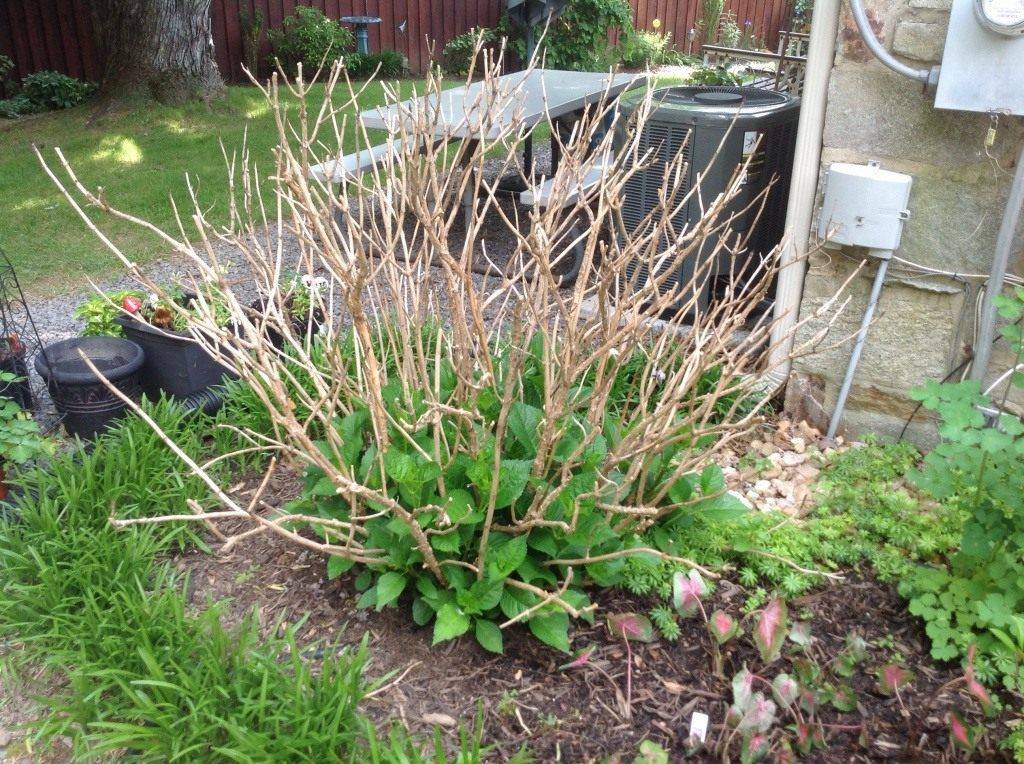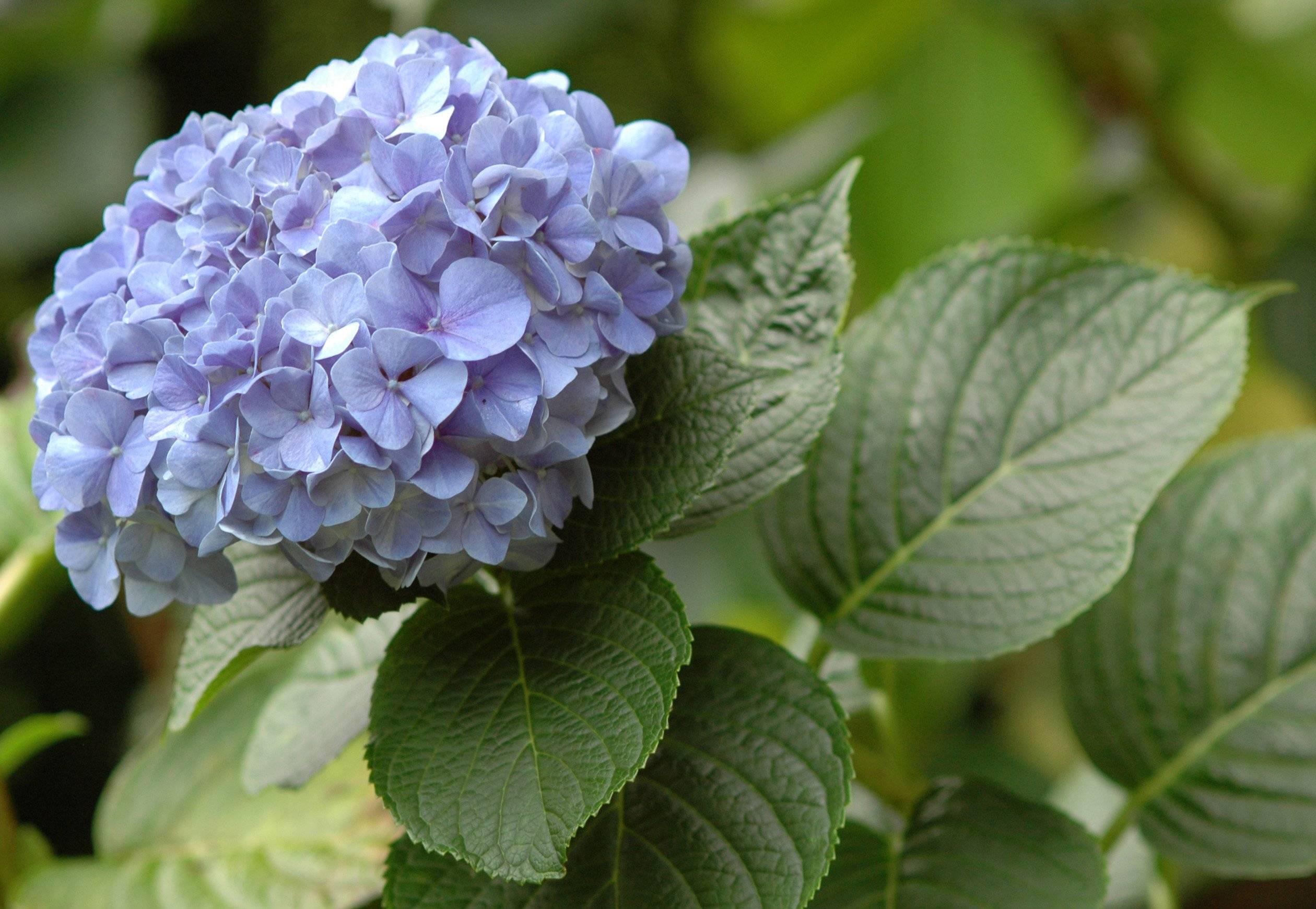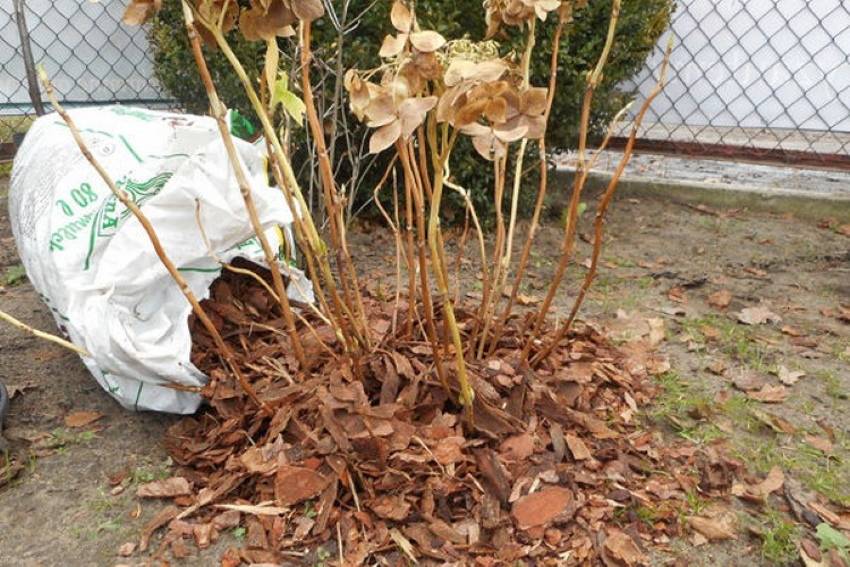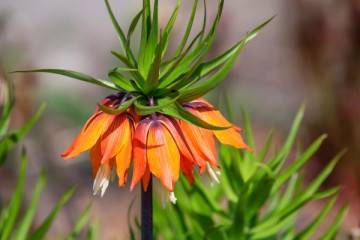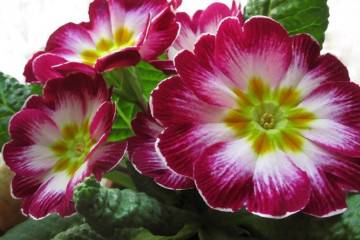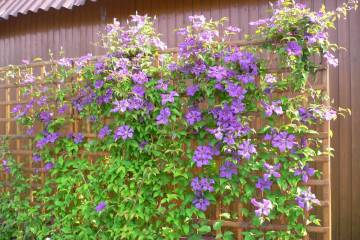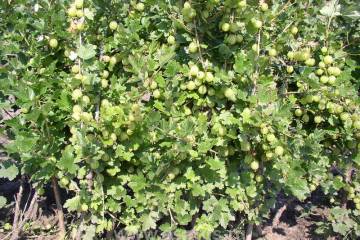Pruning hydrangea paniculata, treelike and large-leaved in spring and autumn
Content:
In the ranking of the most beautiful and unpretentious plants, hydrangea (hydrangea) occupies a leading position. Delicate, varied inflorescences will not leave anyone indifferent. They are very fragile. As the hydrangea grows, the crown thickens, which can lead to a decrease in the quantity and quality of flowers. Therefore, one of the most important steps in grooming is pruning.
Why do you need hydrangea pruning
The flower will grow quickly and produce abundant and beautiful blooms when pruned regularly and correctly. The procedure ensures the growth of large, numerous flowers. If you feel sorry for the inflorescences, do not thin them out, then the buds on the hydrangea will become smaller. During the procedure, only small buds are removed. Thus, only lush, powerful shoots on hydrangeas are grown.
Indications for pruning hydrangeas are:
- formation of the correct shape,
- increase in decorative characteristics,
- growing a standard plant.
Hydrangea is fast growing, so it needs to be shortened every year. After the procedure, the metabolism in the hydrangea is activated, the thickening of the crown is eliminated, the flowering becomes lush.
Types of trimming
There are different types of hydrangea pruning, depending on the purpose of the procedure.
Here are the cases in which pruning is performed:
- Sanitary. It is used for adult shrubs of hydrangea, in order to remove damaged, weak and dead branches. Old shoots are pruned by a fifth, and young ones by a third.
- Formative. Hydrangea pruning is carried out to obtain a beautifully shaped crown. A skeletal shape is created from old branches, and young ones are shortened to the desired length. In adult hydrangeas older than 5 years, all old branches are gradually removed, replacing them with new shoots.
- Anti-aging. It is carried out in adult bushes to replace young shoots.
- Thinning. Apply to small, weakened and damaged branches. Over time, new branches with lush inflorescences will grow in their place. Shoots growing inside the bush are also cut off.
- Stimulating. The main shoots are shortened in order to form new inflorescences. Pruning is carried out in the third year after planting. To stimulate further growth, 4 strong buds are left.
When to prune shrub hydrangeas
A novice florist should remember that pruning will give a positive result only if the correct approach has been applied and the step-by-step stage of shortening the bush has been completed. Therefore, you need not only to know how to prune a hydrangea, but also when to carry out this procedure. The health and decorative characteristics of the shrub depend on the period of pruning. A late spring pruning will negatively affect the condition of the bush.
In the spring
The first and main pruning is done in early spring. This must be done even before the start of sap flow. During this period, all varieties of hydrangea can be shortened, except for broadleaf. Because in this variety, flowers grow at the end of the branches from the extreme upper buds.
In autumn
Pruning in the fall can negatively affect the health of the hydrangea. It is important to know how to prune your hydrangea for the winter. If it is done in late autumn, then the frost resistance of the shrub decreases, and various diseases may develop. Therefore, at the end of the season, only dry shoots are removed.
The need for autumn pruning cannot be ignored. Dried flowers create an additional load on the bush, and if they are not removed, then in winter the branches can break off.
Terms depending on the climatic characteristics of the region
Each region has its own climatic conditions. Accordingly, each area has its own pruning time, depending on weather conditions.
For example, the Moscow region and the Moscow region have a temperate climate with warm summers and frosty, snowy winters. If spring pruning here, as in any region, is carried out immediately after the snow melts, then the last procedure is carried out in October. In November, there may already be frosts here, and the plant needs to gain strength in order to survive the winter period.
In areas with short summers and long, harsh winters, pruning has its own characteristics. There, shoots are shortened only by 1/3 of the length. With more shortening, the branches may not have time to grow, and the bush will not bloom next season. On the territory of Siberia and the Urals, processing is carried out at the end of September or at the beginning of October. In the Leningrad Region, pruning is done after the leaves fall.
Is it possible to prune in the summer
Some inexperienced growers cut shrubs in the summer. But this is their big mistake. Because this is a period of rapid growth of hydrangea and abundant flowering. In addition, at this time, the risk of developing diseases, damage to various pests is increased. Any manipulations, with the exception of medical procedures, have a detrimental effect on the health of the plant. Not only can the buds fall, but infection with dangerous diseases can also occur.
Pruning hydrangeas of different ages
Hydrangea is a perennial crop, so pruning is different for each age. General rules for trimming hydrangeas of different ages:
- The instrument used must be sterile, very sharp.
- Pruning is carried out only in good weather, before the start of sap flow.
- Split areas and places of cuts are processed with garden varnish.
- Slices are made obliquely.
Compliance with these simple recommendations will allow you to carry out the procedure carefully, without injuring the bush, and, as a result, grow a healthy and beautiful plant.
Forming for young plants
In early spring, young bushes are processed in order to give them the correct shape. These manipulations stimulate the growth of large and beautiful inflorescences. The first three years after planting hydrangeas, formative pruning is carried out regularly, but do not forget about the features of different varieties.
On young plants, only weak shoots growing inside the bush and from the root are removed. More buds are left on strong branches than on young ones. In the first year, the culture is shortened slightly. The next season, the formation of the skeletal base of the bush begins.
For adult bushes
Many adult hydrangeas lose their decorative characteristics and splendor of color over time. Cropping will help to effectively solve this problem. Shoots are removed with just a couple of buds. In their place, over time, new shoots will appear with powerful flowering. It is necessary to get rid of injured, frozen and dry branches.Gently remove old shoots from the root of the plant.
Cardinal rejuvenation
Exhausted, old shrubs are rejuvenated with radical pruning. Cut old branches to a stump (about 80 cm long), covering the cuts with garden pitch. Young shoots are left. Such pruning will allow you to renew and return the plant to its former lush beauty.
The main disadvantage of radical pruning is that the hydrangea will not bloom for one season. This is due to the fact that all the forces will go to the formation of a strong lush crown.
Features of pruning different types of hydrangea
Compliance with the recommendations and rules of pruning is the key to the health and growth of the culture. The slightest violation can lead to her death. At the onset of the first warm spring days, they remove the shelter and start pruning.
Paniculata
Pruning hydrangea paniculata is optional. But if it is not carried out, then the lush cone-shaped flowers become smaller, the decorative characteristics of the bush decrease. Therefore, flower growers prefer to cut it.
Processing can be carried out in spring or autumn. Pruning panicle hydrangea in spring will stimulate the growth of many young new shoots, and from July to October there will be a lush bloom. Shoots of the paniculata species are shortened, leaving 4 buds. It is also necessary to form a bush, remove diseased and weak branches.
Tree-like
Pruning the tree hydrangea is extremely important because it will affect the appearance of the bush. Immediately after planting, a tree is formed. It is much more difficult for adult perennial plants to give the correct shape.
When autumn comes, sanitary pruning is carried out in order to remove old dried shoots. Removing the faded inflorescences will relieve you of the additional load, prevent damage to the hydrangea under the weight of the snow. In the spring, they begin to form a crown: the branches are shortened, leaving 3 buds.
Large-leaved
The most capricious species that need special care are bushes with large foliage. Unlike other varieties, it needs to be covered for the winter, since it tolerates frost worse than others.
Therefore, for greater confidence, pruning of the large-leaved hydrangea is carried out when the buds appear. This will allow you to determine which shoots have not survived the winter and should be removed. When the last snow melts, the bush is carefully opened, they give it time to straighten out and after that they begin to shorten the bush.
Caring for hydrangeas after pruning
After pruning, the shrub needs special care. After the procedure in the spring, the hydrangea is fed, the soil around is loosened and watered. Spring fertilization is extremely important. Because growth and flowering depend on it. Mineral, organic compounds will help form healthy shoots.
In order to retain moisture in the soil and prevent the growth of weeds, mulching is carried out from sawdust, straw or dry grass. Young shoots are tied up so that the gusts of wind do not break them.
Frequent mistakes
It is better to learn from the mistakes of others, and not from your own. The novice florist believes that after pruning hydrangeas, special care is not required. But this is not the case. This plant is very fond of attention and in gratitude pleases with lush, beautiful inflorescences. If you cut a plant that has not had time to bloom, then irreparable harm can be done to it.
Violation of the procedure scheme, the use of a dirty or blunt instrument causes deterioration in the health of the hydrangea, and even death. The bush will grow more slowly and bloom worse if it is cut at the wrong time. An error in the definition of the type of crop will lead to the fact that pruning will be performed incorrectly. This will lead to a slowdown in growth, scarcity of flowering.
Whether or not pruning is needed, and when to do it, needs to be decided based on a number of factors. After all, the main thing in the agricultural technology of this culture is not to harm it.
Regular and correct pruning will ensure good health, vigorous growth and lush blooming. To do this, it is enough to know which variety is growing on the site, analyze the climatic conditions and take into account the age of the hydrangea. With a little effort, you can get a beautiful shrub with a long flowering period in your country house or garden plot.
